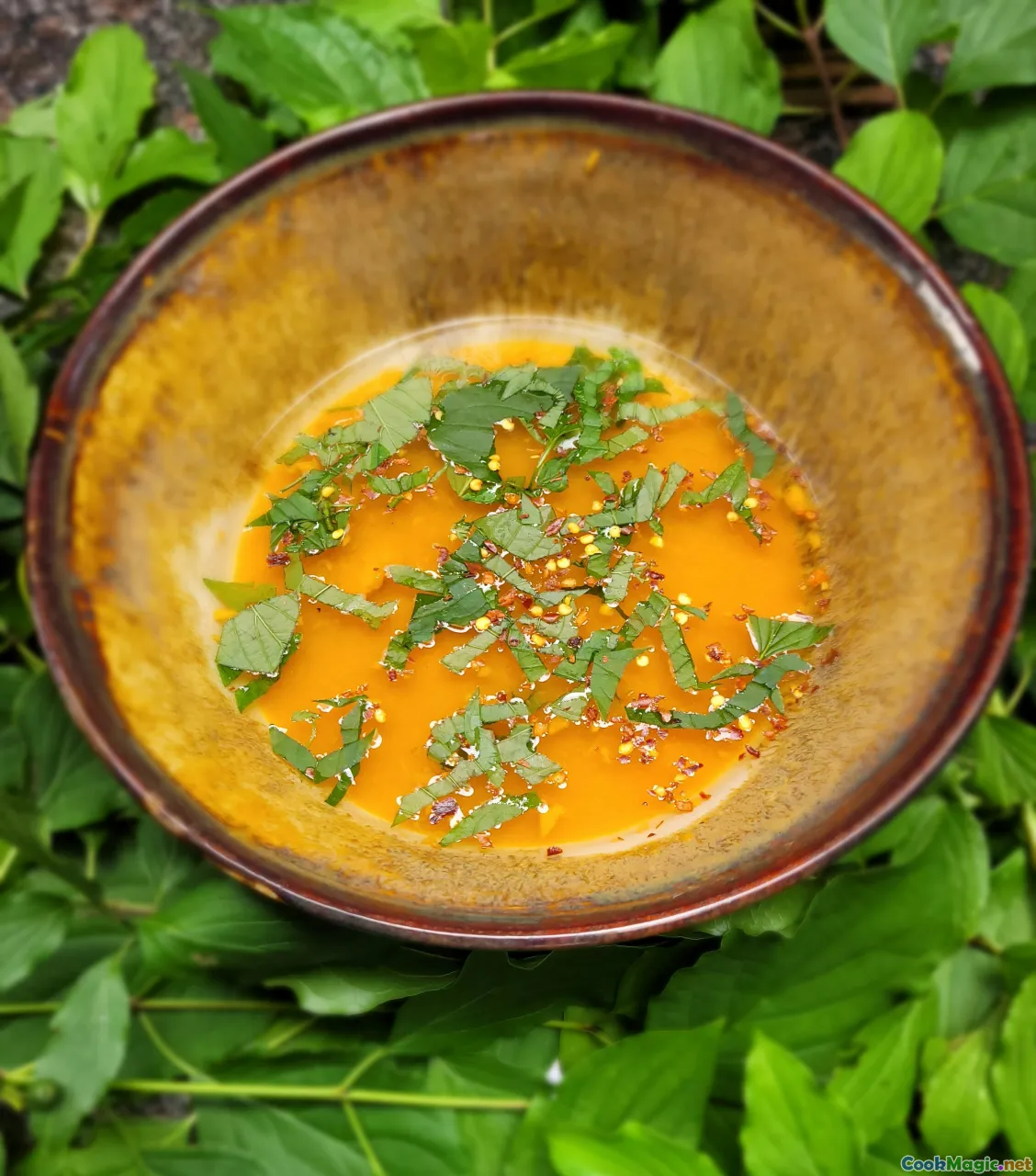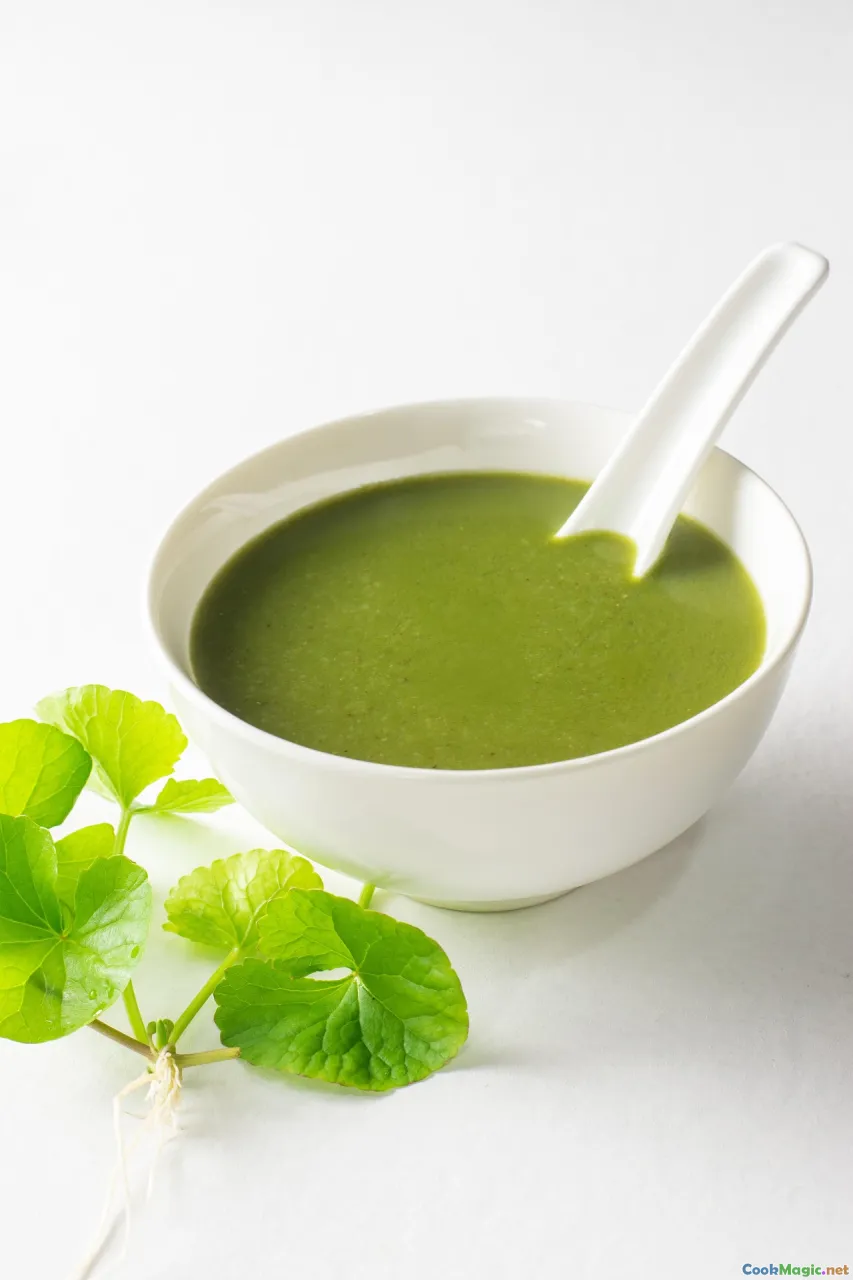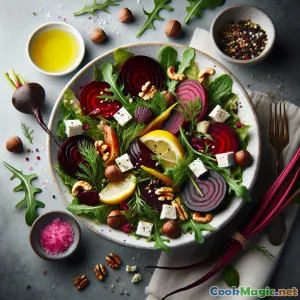
Soupe Consistante de Chardon Écossais et Légumes Racines
(Hearty Scottish Thistle & Root Vegetable Soup)
(0 Avis)0
365
juillet 13, 2025
Signaler un problème
Ingrédients
-
100 grams Feuilles de chardon sauvage
(Soaked and trimmed of thorns; young thistle from safe, pesticide-free areas is ideal)
-
80 grams Grains d'orge
(Pearled barley recommended)
-
1 medium Poireau
(Washed and sliced)
-
2 medium Carotte
(En dés)
-
1 medium Panais
(Diced; adds authentic highland sweetness)
-
1 large Pomme de terre
(Épluché et coupé en dés)
-
1200 ml Bouillon de légumes
(Can substitute chicken stock for a non-vegetarian version)
-
2 cloves Ail
(Haché finement)
-
3 sprigs Thym Frais
(ou 1 cuillère à café de thym séché)
-
1 tsp Sel
-
0.5 tsp Poivre noir
(Fresh cracked preferred)
-
60 ml Crème d'avoine
(Adds creaminess, use dairy cream if preferred)
-
2 tbsp Persil frais
(Haché, pour garnir)
-
4 slices Pain Bannock
(Traditional Scottish accompaniment)
(Soaked and trimmed of thorns; young thistle from safe, pesticide-free areas is ideal)
(Pearled barley recommended)
(Washed and sliced)
(En dés)
(Diced; adds authentic highland sweetness)
(Épluché et coupé en dés)
(Can substitute chicken stock for a non-vegetarian version)
(Haché finement)
(ou 1 cuillère à café de thym séché)
(Fresh cracked preferred)
(Adds creaminess, use dairy cream if preferred)
(Haché, pour garnir)
(Traditional Scottish accompaniment)
Nutrition
- Portions: 4
- Taille de portion: 1 bol (300ml)
- Calories: 210 kcal
- Carbohydrates: 38 g
- Protein: 6 g
- Fat: 3 g
- Fiber: 8 g
- Sugar: 7 g
- Sodium: 650 mg
- Cholesterol: 0 mg
- Calcium: 74 mg
- Iron: 2.1 mg
Instructions
-
1 - Prepare Wild Thistle:
Wearing gloves, carefully trim thistle leaves. Remove thorns and woody stems. Soak in cold salted water for 10 minutes, then rinse and shred.
-
2 - Chop Vegetables:
Dice the carrot, parsnip, and potato. Slice the leek, mince the garlic, and prep all remaining vegetables.
-
3 - Sauté Base:
In a heavy-bottomed pot over medium heat, add a splash of oil. Sauté leek and garlic for 2–3 minutes until fragrant.
-
4 - Cook Vegetables:
Add carrot, parsnip, and potato. Cook, stirring, for 5 minutes until edges soften.
-
5 - Simmer Soup:
Pour in the vegetable stock. Add barley, thistle, thyme, salt, and pepper. Simmer on low heat for 30–35 minutes, stirring occasionally until barley and vegetables are tender.
-
6 - Finish and Blend:
For a creamy soup, blend half the mixture using a stick blender. For rustic texture, leave chunky.
-
7 - Garnish and Serve:
Stir in oat cream for extra body (optional). Garnish with chopped parsley. Serve hot with a slice of bannock.
Wearing gloves, carefully trim thistle leaves. Remove thorns and woody stems. Soak in cold salted water for 10 minutes, then rinse and shred.
Dice the carrot, parsnip, and potato. Slice the leek, mince the garlic, and prep all remaining vegetables.
In a heavy-bottomed pot over medium heat, add a splash of oil. Sauté leek and garlic for 2–3 minutes until fragrant.
Add carrot, parsnip, and potato. Cook, stirring, for 5 minutes until edges soften.
Pour in the vegetable stock. Add barley, thistle, thyme, salt, and pepper. Simmer on low heat for 30–35 minutes, stirring occasionally until barley and vegetables are tender.
For a creamy soup, blend half the mixture using a stick blender. For rustic texture, leave chunky.
Stir in oat cream for extra body (optional). Garnish with chopped parsley. Serve hot with a slice of bannock.
En savoir plus sur: Soupe Consistante de Chardon Écossais et Légumes Racines
Eastern Highland Thistle Soup: Wild Virtues in a Bowl
The Eastern Highland Thistle Soup offers a unique taste of Scottish ingenuity, steeped in tradition and brimming with nutrients extracted from the land itself. There’s something magical about using wild ingredients — and in Scotland’s rugged, mist-shrouded highlands, it doesn’t get wilder or more iconic than the humble thistle. Long revered as the national emblem, thistle is rarely found in contemporary kitchens, but historically, resourceful cooks and foragers transformed it into sustenance during lean seasons.
History & Tradition
The thistle has been wreathed in Scottish legend for centuries, celebrated not just as a hardy symbol but as an edible plant that once joined nettle and dandelion on rural tables. Our ancestors prized these wild greens, leveraging their strong flavors and abundant nutrition to survive both harsh winters and dietary restrictions, especially in times when fresh greens from the garden were unavailable. While challenging to harvest and often overlooked due to its natural armor of spiny thorns, careful preparation renders the young thistle a surprisingly delicate, herbal addition to soups.
Barley grain links this recipe firmly to Scottish culinary roots, as barley fields once blanketed the highlands and valleys, providing both warmth and energy to crofters and city folk alike. Blending the earthy root vegetables with the clean, slightly artichoke-esque notes of young thistle strikes a remarkable balance between comfort and novelty.
Preparation & Cooking Notes
When foraging for thistle, choose young plants with pliable, green leaves. Always wear gloves to avoid painful pricks! After thorough cleaning and de-thorning (a tedious but meditative step), even the cautious cook will appreciate thistle’s ability to absorb the flavors of companion vegetables. Soaking the leaves in cold salted water not only reduces bitterness but also revives any wilt.
The base of sautéed leeks and garlic creates deep aromatics, feeding the barley and root vegetables with subtlety. Each addition—carrots for sweetness, parsnips for a honeyed hint, and potatoes for rich body—grounds the soup in hearty comfort. The barley slowly swells, lending creamy thickness and transforming each mouthful into an edible embrace against cold Highland winds.
Blending a portion of the soup isn’t obligatory; many prefer to leave it rustic and toothsome, with surprising green flecks and pockets of chewy barley. If you fancy a more modern, delicate texture, a partial blend is a happy compromise.
Personal Tips & Serving Suggestions
- Ensure thistle is from an uncontaminated, reliable foraging site to avoid exposure to harmful chemicals.
- Oat cream is an excellent vegan alternative that echoes both regional ingredients and contemporary dietary needs. Classic single cream works beautifully for a more luxurious mouthfeel, though lent creamy richness may overshadow the delicate meadow notes of thistle.
- Leftovers keep splendidly and actually develop greater flavor after a rest in the cold; simply reheat gently, perhaps with extra fresh herbs to liven things.
- Bread accompaniment is tradition-hard to break—opt for dense, slightly sweet Scottish bannock or freshly toasted oatcakes.
Cultural Significance & Uniqueness
In cultural terms, there’s exceptional pride packed into a bowl of this soup. Every spoonful is layered with the spirit of Scottish resilience—the making-do, the refusal to waste, the transformation of prickly obstacles into nourishment. Though thistle’s notoriety as a weed might scare the home chef, its place in sustainable, foraged cooking cannot be overstated as lawns and fields around the world gain interest for their wild bounty.
Sharing Eastern Highland Thistle Soup carries the stories of foragers past into modern kitchens. Its uncommon green hue, delicate herbal perfume, and gentle sweetness from familiar roots evoke a culinary landscape many have never tasted—but will remember.
Dreamy, elemental, and bravely botanical, this is a dish for those who don’t just want to taste a meal, but to experience the landscape from which it springs. Try it with friends who crave adventure, and enjoy a rare Scottish tradition reborn.





















